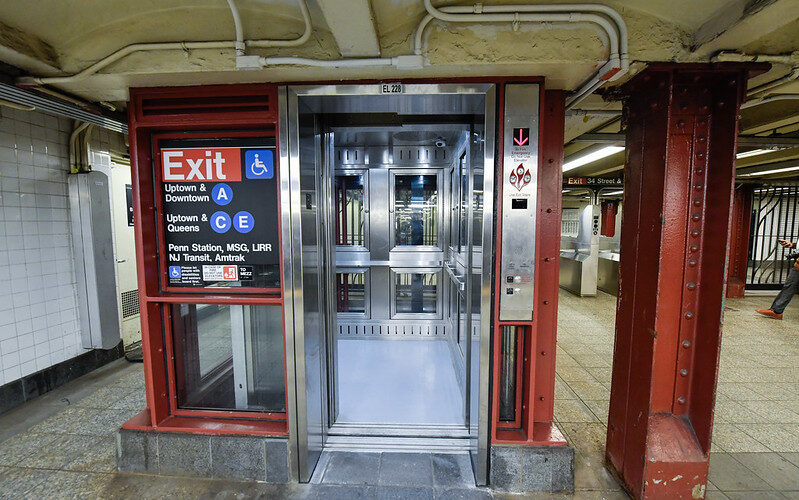With its busy pace and bustling subway system, New York City has long been touted as a city of opportunity and inclusivity where anyone can succeed.
However, this was not always the reality for people living with disabilities.
Subway stations built more than a century ago were never designed to account for the needs of people in wheelchairs or with mobility issues. That began to change 35 years ago today, July 26, 1990, when President George H.W. Bush signed the Americans with Disabilities Act (ADA) into law.
The ADA brought the daily challenge of accessibility to the forefront and its passage signified a path forward to end “persistent discrimination in the workplace and barriers posed by inaccessible public transportation, public accommodations, and telecommunications.”
This historic and progressive moment created a push towards public transit accessibility for tens of millions of Americans, many of whom, like New Yorkers, utilize transit systems that date back to the turn of the 20th century.
The New York City subway, founded in 1904, operates as the largest public transportation system in North America and one of the largest in the world. In 2023, the system averaged more than 3.6 million riders each day and more than 1.15 billion rides for the year.
For a system designed to propel our region’s economic strength and serve as a growth engine for one of the busiest metropolitan markets in the world, ADA accessibility is of paramount importance. What is the purpose of a city’s subway system if not everyone can use or reliably get to it?
According to the U.S. Census Bureau, an estimated 12.9% of New Yorkers have a disability that in some way impacts their ability to walk, see, hear, or think. This is an increase from 2015 where an estimated 10.8% of New York’s population had disabilities.
Along with the gradual increase of this demographic in New York, the city’s 65-plus population reached 1.43 million in 2023, a 53% increase since 2000. As the five boroughs get increasingly grayer in coming years, it is imperative that New York commits itself to becoming accessible for all who live and work here.
With the MTA’s goal to make 95% of city subway stations ADA-accessible by 2055, systemwide accessibility and equal opportunity within our society is achievable and must be done out of dignity and respect for others.
In a 24/7 city like New York, the process of upgrading our stations can be a hassle. Sometimes, it can involve digging through decades-old underground infrastructure, navigating old power lines, gas lines and watermains to install elevators where none existed before. Such disruptions to regular transit service are never easy, but the results far outweigh the inconvenience.
The 35th anniversary of ADA reinforces that mission of accessibility and the importance of investing in and modernizing our transit systems.
An accessible subway stop allows everyone to live, shop, attend school, and comfortably visit nearby family and friends. Elevators and ramps in stations help mobility-limited senior citizens see their grandchildren across the city. Parents no longer have to struggle carrying strollers up and down multiple flights of stairs during rush hour. Riders utilizing canes, crutches, walkers and other mobility aids due to temporary injuries can utilize these stations to their maximum capabilities.
It has also spawned new modes of micro-mobility; accessible stations allow people to bring their bikes or their scooters onto the subway. It’s an exciting development that proves how enhanced accessibility can result in unforeseen positive outcomes.
Empowering all transit riders enforces that ADA is about accessibility, not disability, facilitating simpler, more convenient trips for all.
Even beyond elevators, escalators and ramps, ADA access can include clearer and wider platforms, brighter lighting, raised platforms, large-print and braille signage, and so much more. Each of these improvements fundamentally change the way people live, enjoy and experience their city, whether that be in New York or anywhere else across the country.
Demand for accessibility has continued to grow and those fundamental changes we make to our metropolitan region’s public transit now will impact the lives of tens of millions for decades to come.
Thirty five years later, the passage of the Americans with Disabilities Act has resulted in promising changes in countless communities across the United States, especially in New York City.
Reinvigorating and transforming our transit stations is not simply about meeting demands of the law but about the betterment of society, and that is always worth it in the end.
Hatab is vice president of Forte Construction Corp., a leading general contracting firm specializing in transit accessibility and ADA compliance projects throughout New York City and Long Island.








